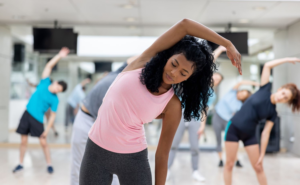Regaining walking function after an injury or surgery can be a challenging journey, but with the right gait training techniques, individuals can progress from dependence to independence. Gait training focuses on improving the mechanics and coordination of walking, which is essential for restoring mobility and achieving functional independence. This article will explore effective gait training techniques and highlight the 10 best gait exercises to help you on your path to recovery.
Understanding Gait Training
Gait training involves a structured approach to improving walking patterns and muscle coordination. It is crucial for individuals who have experienced injuries, surgeries, or neurological conditions that impact their ability to walk. The primary goals of gait training are to enhance balance, strengthen muscles, and improve overall walking mechanics.

The Importance of Gait Exercises
Gait exercises are designed to address specific impairments and build strength and coordination. They play a critical role in rehabilitation by targeting the muscles and movements necessary for walking. Incorporating a variety of exercises into a rehabilitation program can help individuals regain their walking function more effectively.
10 Best Gait Exercises
1. Heel Slides
Heel slides are a fundamental exercise for improving range of motion and flexibility. Begin by lying on your back with your legs straight. Slowly slide one heel towards your buttocks while keeping your foot on the floor. Return to the starting position and repeat with the other leg. This exercise helps enhance knee and hip mobility.
2. Marching in Place
Marching in place is an excellent exercise for improving gait and coordination. Stand with your feet hip-width apart and lift one knee to hip level. Alternate legs, maintaining a steady rhythm. This exercise helps strengthen the hip flexors and improve balance.
3. Step-Ups
Step-ups are effective for building lower body strength and stability. Use a sturdy step or platform and step up with one foot, followed by the other foot. Step down in the same manner. This exercise targets the quadriceps, hamstrings, and glutes, which are essential for walking.
4. Toe Raises
Toe raises help improve calf strength and balance. Stand with your feet shoulder-width apart and slowly raise your heels off the ground, balancing on your toes. Lower your heels back down and repeat. This exercise strengthens the calf muscles and improves ankle stability.
5. Heel-to-Toe Walk
The heel-to-toe walk is a dynamic exercise that enhances balance and coordination. Walk in a straight line, placing the heel of one foot directly in front of the toes of the other foot with each step. This exercise improves gait accuracy and stability.
6. Wall Slides
Wall slides help improve knee and hip strength while promoting proper alignment. Stand with your back against a wall and slide down into a seated position, keeping your knees aligned with your toes. Slide back up to the starting position. This exercise targets the quadriceps and glutes.
7. Side Leg Raises
Side leg raises strengthen the hip abductors and improve lateral stability. Lie on your side with your legs straight and lift the top leg to hip level. Lower it back down slowly. Repeat on the other side. This exercise enhances balance and gait stability.
8. Bridges
Bridges are effective for strengthening the glutes and lower back muscles. Lie on your back with your knees bent and feet flat on the floor. Lift your hips towards the ceiling, squeezing your glutes. Lower your hips back down. This exercise supports overall gait function.
9. Walking with Assistance
Using assistive devices, such as walkers or crutches, can provide support during gait training. Practice walking with the assistance of these devices to build confidence and improve walking mechanics. Gradually reduce reliance on the device as strength and coordination improve.
10. Treadmill Walking
Walking on a treadmill allows for controlled gait training. Adjust the speed and incline to match your fitness level and progress gradually. Treadmill walking helps simulate real walking conditions and allows for consistent practice.
Incorporating Gait Exercises into Your Routine
To achieve the best results, incorporate these 10 best gait exercises into your daily rehabilitation routine. Begin with a few repetitions of each exercise and gradually increase as your strength and coordination improve. Working with a physical therapist can provide personalized guidance and ensure proper technique.
Conclusion
Gait training is a crucial component of recovery after an injury or surgery. By incorporating these 10 best gait exercises into your routine, you can effectively improve your walking function and move towards greater independence. Remember, consistency and patience are key to achieving your rehabilitation goals. With dedication and the right exercises, you can regain your walking ability and enhance your quality of life.
Leave a Reply